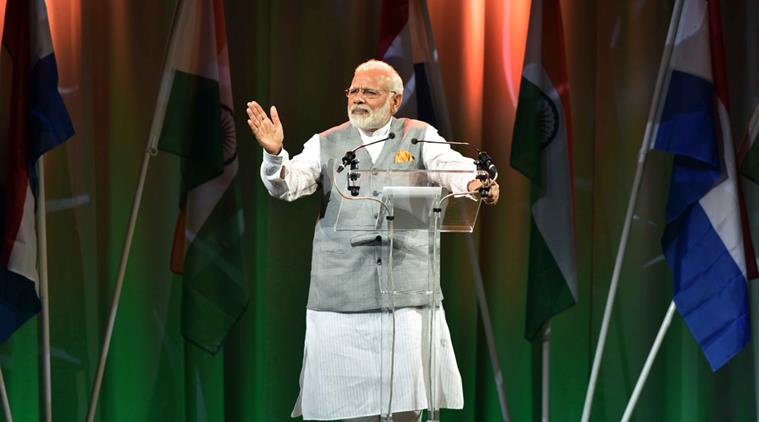Electrify India
September 26, 2017 | Expert Insights

India’s Prime Minister Narendra Modi launched a new scheme aimed at providing electricity to all Indian households by the end of 2018.
The program, which is called “Pradhan Mantri Sahaj Bijli Har Ghar Yojana” or the Saubhagya scheme will reportedly cost $2.5 billion.
Background
According to the latest statistics, nearly 300 million Indians do not have electricity in the country. Around 40 million households in India do not have electrical power. In 2016, India’s power ministry said that the country’s per capita consumption is significantly lower than the world average. Additionally, large swaths of India are plagued by rampant power cuts.
In some cases, state discoms can’t buy electricity due to lack of financial resources and hence there is also unused power lying in the grid.
Demand for power in India grew by 4.2% between 2015-2016. It had grown by 6.6% from 2014-2015. Bihar has the lowest per capital power availability in the nation. However, demand increased in the nation by 25% between 2015 and 2016.
Analysis
The Indian government has launched the Saubhagya scheme in hopes of bringing electricity to all households in India. The $2.5 billion project will be funded mostly by the federal government. The government is hoping that this will result in a decrease in kerosene consumption in the country.
Prime Minister Modi who launched the scheme said, “The government will connect each house, whether it is in village, a city or in remote locations. No poor [person] will have to pay for the connection. The government will go to each such poor [person’s] house and give a connection. A connection without spending a rupee. This will cost more than Rs 16,000 crore. We have decided that no poor [person] will bear this burden.”
According to media reports, that power connections costing between Rs 2,500 and Rs 4,000 will be given for free. However, the government will not be providing subsidies for the monthly consumption of the electricity. Consumers will have pay in accordance to their utilization.
Residents from rural areas that do not live below the poverty line will have to pay a sum of Rs 500 for the connection. As the government noted in a statement “beneficiaries for free electricity connections would be identified using Socio-Economic and Caste Census (SECC) 2011 data.” Urban non-poor will not be covered in this scheme and there will be 10 installment facilities.
There are 10 states in India that account for nearly 90% of the un-electrified households in the nation. Among them are Bihar, Uttar Pradesh, Maharashtra, Odisha and J&K.
Assessment
Our assessment is that if the program is successful, then it will provide a boost to the poorest living in India. It will also aid the nation’s economy as productivity will increase with access to power. This might also result in additional job opportunities. However, the government has not provided details on how this will be implemented and this could cause confusion in the future.








Comments